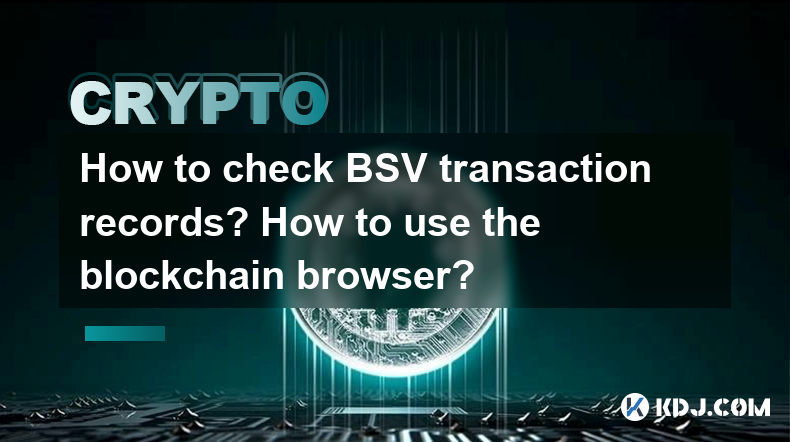-
 Bitcoin
Bitcoin $106,731.2224
-1.05% -
 Ethereum
Ethereum $2,444.9804
-1.20% -
 Tether USDt
Tether USDt $1.0003
0.01% -
 XRP
XRP $2.1882
0.09% -
 BNB
BNB $651.1435
-0.61% -
 Solana
Solana $148.3252
-2.09% -
 USDC
USDC $1.0000
0.01% -
 TRON
TRON $0.2787
0.55% -
 Dogecoin
Dogecoin $0.1598
-3.16% -
 Cardano
Cardano $0.5520
-2.43% -
 Hyperliquid
Hyperliquid $39.0960
-2.64% -
 Bitcoin Cash
Bitcoin Cash $516.9519
2.98% -
 Sui
Sui $2.7011
-2.95% -
 Chainlink
Chainlink $13.0582
-1.71% -
 UNUS SED LEO
UNUS SED LEO $8.9250
-2.53% -
 Stellar
Stellar $0.2359
-0.18% -
 Avalanche
Avalanche $17.3856
-3.73% -
 Toncoin
Toncoin $2.8095
-3.56% -
 Shiba Inu
Shiba Inu $0.0...01121
-1.95% -
 Litecoin
Litecoin $85.2795
-0.85% -
 Hedera
Hedera $0.1471
-2.15% -
 Monero
Monero $319.8004
1.12% -
 Dai
Dai $1.0001
0.01% -
 Ethena USDe
Ethena USDe $1.0001
0.02% -
 Bitget Token
Bitget Token $4.5344
-1.07% -
 Polkadot
Polkadot $3.3224
-2.96% -
 Uniswap
Uniswap $6.9697
-2.75% -
 Aave
Aave $266.1658
-2.25% -
 Pepe
Pepe $0.0...09414
-3.41% -
 Pi
Pi $0.4913
-3.29%
How to check BSV transaction records? How to use the blockchain browser?
To check BSV transaction records, use a blockchain browser like Whatsonchain: enter the TXID or address to view details such as transaction hash, block height, and wallet balance.
May 03, 2025 at 06:50 am

Checking BSV (Bitcoin SV) transaction records and using a blockchain browser are essential skills for anyone involved in the cryptocurrency space. These tools allow you to verify transactions, check wallet balances, and understand the flow of funds on the blockchain. This article will guide you through the process of checking BSV transaction records and using a blockchain browser effectively.
Understanding BSV Transaction Records
BSV transaction records are entries on the Bitcoin SV blockchain that document the transfer of funds from one address to another. Each transaction contains details such as the sender's and receiver's addresses, the amount transferred, and a unique transaction ID (TXID). These records are immutable and publicly accessible, ensuring transparency and security.
To check BSV transaction records, you will need to use a blockchain explorer or browser specifically designed for the Bitcoin SV network. Blockchain explorers are online tools that allow users to browse and search the blockchain for transaction data.
Choosing a BSV Blockchain Browser
There are several blockchain browsers available for BSV, each offering slightly different features and interfaces. Some of the most popular BSV blockchain browsers include:
- Whatsonchain
- BSV Explorer
- Blockchair
For this guide, we will use Whatsonchain as an example due to its user-friendly interface and comprehensive features.
Accessing Whatsonchain
To begin using Whatsonchain to check BSV transaction records, follow these steps:
- Visit the Whatsonchain website: Open your web browser and navigate to the Whatsonchain website at www.whatsonchain.com.
- Select the BSV Network: Ensure you are on the BSV network tab, as Whatsonchain supports multiple blockchain networks.
Searching for a Transaction
Once you are on the Whatsonchain website, you can search for a specific BSV transaction using the following methods:
- Transaction ID (TXID): If you have the TXID of the transaction you want to check, enter it into the search bar at the top of the page and press enter.
- Address: You can also search for transactions associated with a specific BSV address by entering the address into the search bar.
Analyzing a Transaction Record
After entering the TXID or address, Whatsonchain will display the transaction details. Here’s what you can expect to see:
- Transaction Hash: The unique identifier of the transaction.
- Block Height: The block number in which the transaction was included.
- Timestamp: The date and time when the transaction was confirmed.
- Inputs and Outputs: The addresses involved in the transaction and the amounts transferred.
You can click on the inputs and outputs to see more details about the addresses involved, including their balance and transaction history.
Checking Wallet Balance
To check the balance of a BSV wallet using Whatsonchain, follow these steps:
- Enter the Address: Enter the BSV address you want to check into the search bar.
- View Balance: The page will display the current balance of the address, along with a list of recent transactions.
You can click on individual transactions to see more details, such as the TXID and the block in which the transaction was confirmed.
Verifying Transaction Confirmation
When checking BSV transaction records, it's important to verify that the transaction has been confirmed. A transaction is considered confirmed once it has been included in a block and added to the blockchain. Here’s how to check the confirmation status:
- Block Height: Look at the block height of the transaction. Compare it to the current block height displayed on the Whatsonchain homepage.
- Confirmations: The number of confirmations is the difference between the current block height and the block height of the transaction. More confirmations indicate a higher level of security.
Using Advanced Features
Whatsonchain and other BSV blockchain browsers offer advanced features that can enhance your ability to analyze transactions. Some of these features include:
- Transaction Graphs: Visual representations of the flow of funds between addresses.
- Address Tags: Labels that help identify the type of address, such as exchange or merchant addresses.
- API Access: For developers, APIs allow for programmatic access to blockchain data.
To use these advanced features, navigate to the respective sections on the Whatsonchain website and follow the provided instructions.
Troubleshooting Common Issues
When using a BSV blockchain browser, you might encounter some common issues. Here’s how to troubleshoot them:
- Transaction Not Found: If a transaction does not appear in the search results, it may not have been confirmed yet. Wait a few minutes and try again.
- Incorrect Address: Double-check that you have entered the correct BSV address or TXID. A single incorrect character can result in no results.
- Slow Website: If the website is slow to load, it may be experiencing high traffic. Try again later or use a different BSV blockchain browser.
Frequently Asked Questions
Q: Can I use a BSV blockchain browser to track the source of funds?
A: Yes, you can use a BSV blockchain browser to trace the flow of funds by following the transaction inputs and outputs. However, the level of detail depends on the transparency of the addresses involved.
Q: Is it possible to check BSV transactions on mobile devices?
A: Yes, most BSV blockchain browsers, including Whatsonchain, are mobile-friendly and can be accessed through a web browser on your smartphone or tablet.
Q: How long does it typically take for a BSV transaction to be confirmed?
A: The confirmation time for BSV transactions can vary, but it typically takes around 10 minutes for a transaction to be included in a block and confirmed.
Q: Can I use a BSV blockchain browser to check transactions on other blockchain networks?
A: No, a BSV blockchain browser is specifically designed for the Bitcoin SV network. To check transactions on other networks, you would need to use a browser compatible with that specific blockchain.
Disclaimer:info@kdj.com
The information provided is not trading advice. kdj.com does not assume any responsibility for any investments made based on the information provided in this article. Cryptocurrencies are highly volatile and it is highly recommended that you invest with caution after thorough research!
If you believe that the content used on this website infringes your copyright, please contact us immediately (info@kdj.com) and we will delete it promptly.
- Powell, Stablecoin Regulation, and Circle's Bold Move: A New York Minute on Crypto's Future
- 2025-07-02 02:30:12
- Ethereum Price, Tom Lee, and Bitcoin: A New Era for Crypto?
- 2025-07-02 02:30:12
- Hoskinson, Ripple, Cardano DeFi: A New Era of Collaboration?
- 2025-07-02 02:35:12
- BlockDAG, ALGO, and the Crypto Trends Shaping 2025
- 2025-07-02 01:50:12
- Cold Wallet, Token, Gains: Is CWT the Smartest Crypto Move?
- 2025-07-02 01:10:12
- Pi Coin's Rocky Ride: Support Levels, Recovery Timeline, and What the Experts Are Saying
- 2025-07-02 01:10:12
Related knowledge

How to customize USDT TRC20 mining fees? Flexible adjustment tutorial
Jun 13,2025 at 01:42am
Understanding USDT TRC20 Mining FeesMining fees on the TRON (TRC20) network are essential for processing transactions. Unlike Bitcoin or Ethereum, where miners directly validate transactions, TRON uses a delegated proof-of-stake (DPoS) mechanism. However, users still need to pay bandwidth and energy fees, which are collectively referred to as 'mining fe...

USDT TRC20 transaction is stuck? Solution summary
Jun 14,2025 at 11:15pm
Understanding USDT TRC20 TransactionsWhen users mention that a USDT TRC20 transaction is stuck, they typically refer to a situation where the transfer of Tether (USDT) on the TRON blockchain has not been confirmed for an extended period. This issue may arise due to various reasons such as network congestion, insufficient transaction fees, or wallet-rela...

How to cancel USDT TRC20 unconfirmed transactions? Operation guide
Jun 13,2025 at 11:01pm
Understanding USDT TRC20 Unconfirmed TransactionsWhen dealing with USDT TRC20 transactions, it’s crucial to understand what an unconfirmed transaction means. An unconfirmed transaction is one that has been broadcasted to the blockchain network but hasn’t yet been included in a block. This typically occurs due to low transaction fees or network congestio...

How to check USDT TRC20 balance? Introduction to multiple query methods
Jun 21,2025 at 02:42am
Understanding USDT TRC20 and Its ImportanceUSDT (Tether) is one of the most widely used stablecoins in the cryptocurrency market. It exists on multiple blockchain networks, including TRC20, which operates on the Tron (TRX) network. Checking your USDT TRC20 balance accurately is crucial for users who hold or transact with this asset. Whether you're sendi...

What to do if USDT TRC20 transfers are congested? Speed up trading skills
Jun 13,2025 at 09:56am
Understanding USDT TRC20 Transfer CongestionWhen transferring USDT TRC20, users may occasionally experience delays or congestion. This typically occurs due to network overload on the TRON blockchain, which hosts the TRC20 version of Tether. Unlike the ERC20 variant (which runs on Ethereum), TRC20 transactions are generally faster and cheaper, but during...

The relationship between USDT TRC20 and TRON chain: technical background analysis
Jun 12,2025 at 01:28pm
What is USDT TRC20?USDT TRC20 refers to the Tether (USDT) token issued on the TRON blockchain using the TRC-20 standard. Unlike the more commonly known ERC-20 version of USDT (which runs on Ethereum), the TRC-20 variant leverages the TRON network's infrastructure for faster and cheaper transactions. The emergence of this version came as part of Tether’s...

How to customize USDT TRC20 mining fees? Flexible adjustment tutorial
Jun 13,2025 at 01:42am
Understanding USDT TRC20 Mining FeesMining fees on the TRON (TRC20) network are essential for processing transactions. Unlike Bitcoin or Ethereum, where miners directly validate transactions, TRON uses a delegated proof-of-stake (DPoS) mechanism. However, users still need to pay bandwidth and energy fees, which are collectively referred to as 'mining fe...

USDT TRC20 transaction is stuck? Solution summary
Jun 14,2025 at 11:15pm
Understanding USDT TRC20 TransactionsWhen users mention that a USDT TRC20 transaction is stuck, they typically refer to a situation where the transfer of Tether (USDT) on the TRON blockchain has not been confirmed for an extended period. This issue may arise due to various reasons such as network congestion, insufficient transaction fees, or wallet-rela...

How to cancel USDT TRC20 unconfirmed transactions? Operation guide
Jun 13,2025 at 11:01pm
Understanding USDT TRC20 Unconfirmed TransactionsWhen dealing with USDT TRC20 transactions, it’s crucial to understand what an unconfirmed transaction means. An unconfirmed transaction is one that has been broadcasted to the blockchain network but hasn’t yet been included in a block. This typically occurs due to low transaction fees or network congestio...

How to check USDT TRC20 balance? Introduction to multiple query methods
Jun 21,2025 at 02:42am
Understanding USDT TRC20 and Its ImportanceUSDT (Tether) is one of the most widely used stablecoins in the cryptocurrency market. It exists on multiple blockchain networks, including TRC20, which operates on the Tron (TRX) network. Checking your USDT TRC20 balance accurately is crucial for users who hold or transact with this asset. Whether you're sendi...

What to do if USDT TRC20 transfers are congested? Speed up trading skills
Jun 13,2025 at 09:56am
Understanding USDT TRC20 Transfer CongestionWhen transferring USDT TRC20, users may occasionally experience delays or congestion. This typically occurs due to network overload on the TRON blockchain, which hosts the TRC20 version of Tether. Unlike the ERC20 variant (which runs on Ethereum), TRC20 transactions are generally faster and cheaper, but during...

The relationship between USDT TRC20 and TRON chain: technical background analysis
Jun 12,2025 at 01:28pm
What is USDT TRC20?USDT TRC20 refers to the Tether (USDT) token issued on the TRON blockchain using the TRC-20 standard. Unlike the more commonly known ERC-20 version of USDT (which runs on Ethereum), the TRC-20 variant leverages the TRON network's infrastructure for faster and cheaper transactions. The emergence of this version came as part of Tether’s...
See all articles

























































































